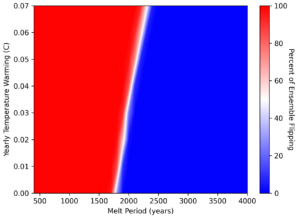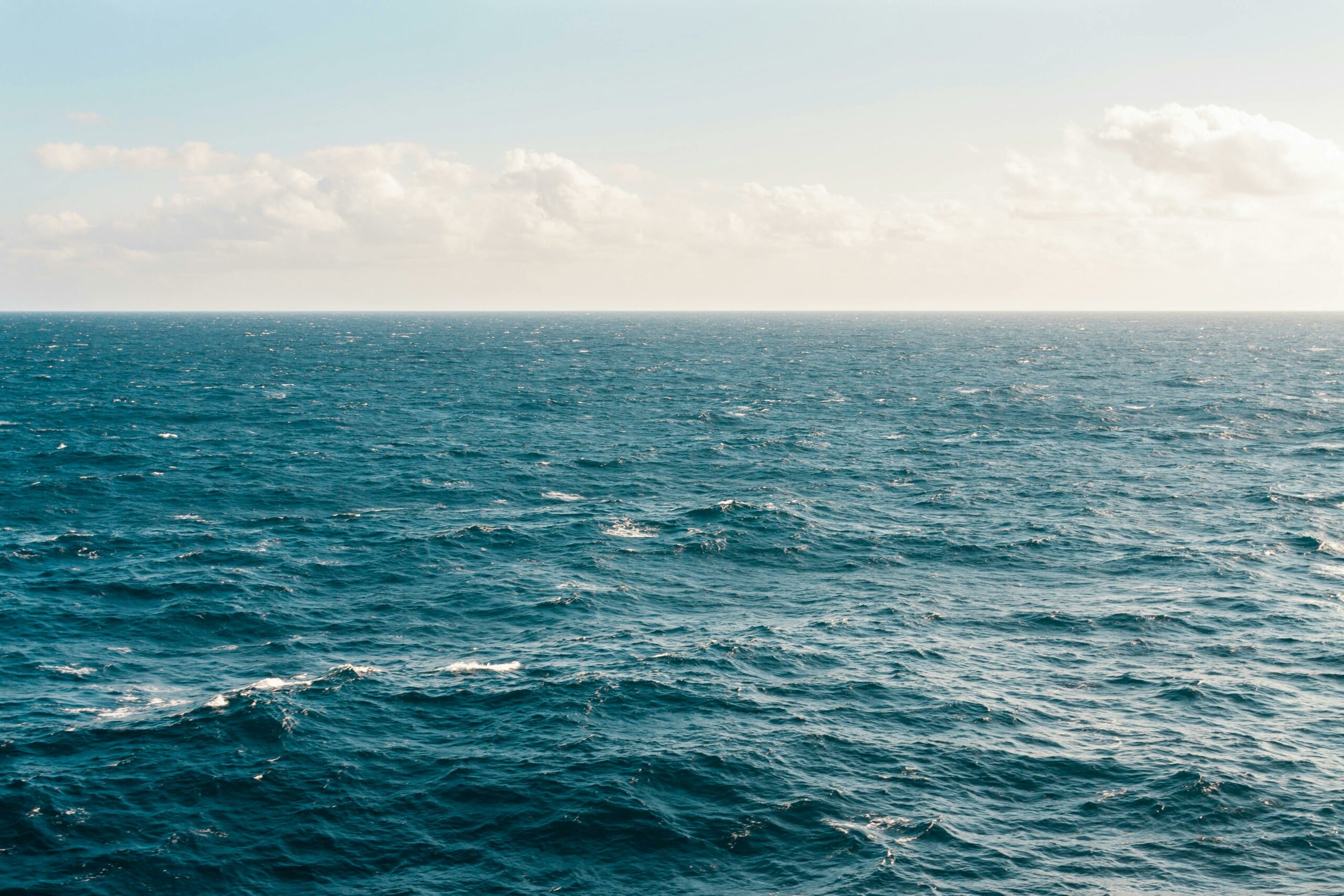by Ivo Pasmans, April 2024
“We’re doomed, doomed!” was the catch phrase of the always cheerful and generous private Frasier in the British sitcom Dad’s Army. And if recent publications [1,2,3] are to be believed, it is very appropriate to describe Europe’s current predicament. This time the threat is however not lurking from the other side of the Channel but stemming from the possible reversal of the Atlantic Meridional Overturning Circulation (AMOC). The AMOC is part of what is colloquially known as the ‘global conveyer belt’ in the oceans. Together with the Gulfstream, which is more important and driven by different processes, it carries warm water northward giving western Europe a comparatively mild climate for its latitude.
Atlantic Meridional Overturning Circulation
In the current climate, warm and salty water from the subtropics moves northwards. There, it cools and freshens due to interactions with the subarctic atmosphere. These two processes have opposite effects on the density of the water: the cooling tends to increase the density, while the freshening tends to decrease it. At present, the cooling wins; the denser water sinks and is transported southward in the deep ocean. However, as the polar climate warms there will be less cooling and, simultaneously, the melting of the Greenland ice sheet increases freshening. Consequently, the density difference between the subpolar and subtropical regions shrinks and with it the strength of the circulation. Theoretically, the freshening may even become the dominant process. This would result in a reversal of the circulation direction with upwelling in the subpolar region.
Stommel model
The question is how close we are to this reversal, or tipping point, and whether with the expected levels of climate change we will reach it. This can be studied with the aid of mathematical models. The simplest of which is the Stommel box-model. In this model, the North-Atlantic is represented as just two boxes: a subequatorial one and a subpolar one, each with their own temperature and salinity. The circulation between the boxes and the heat/salinity exchange between the deep ocean and ocean surface are assumed to be governed by an exchange parameter mulitplied by the differences in density, temperature and salinity respectively. Given the wide variety of processes involved in ocean mixing even full, state-of-the-art climate models with millions of boxes cannot fully resolve the physics of these exchange processes. If full models struggle with this task, deducing accurate values for the three different exchange parameters in the coarse Stommel model from physics directly is even more daunting. This is where the ensemble Kalman filter can help.
American students [4] have run an ensemble of 100 model runs, each with widely different exchange parameters. The temperatures and salinities produced by these models for the two boxes are compared for each month with box-averaged observations from the UK Met Office’s EN4 dataset and the exchange parameters of the ensemble are adjusted such that the model output better matches the observations. Figure 1 shows that after assimilating 18 years of observations the exchange parameters in the different ensemble members starts to convergence to a single value. In the end, we get an estimate for the parameters that can produce forecasts that are as realistic as possible given our simple model.

Figure 1: (a) salinity exchange, (b) heat exchange and (c) transport parameter for the different ensemble members as a function of time during the assimilation period. Red line indicates the most likely value of the parameter. Notice the decrease of the ensemble spread as more and more observations are assimilated over time.
Future AMOC
Having obtained plausible values for the exchange parameters, the different ensemble members are then carried forward until 2104. This is done whilst applying the effects of climate change: the subpolar ocean surface warms faster than the subequatorial one and the Greenland ice sheet is melting. The direction of the AMOC in 2104 under different levels of climate change is shown in Figure 2. As, at the current rate, melting of the ice sheet would take at least 7000 years [5], no AMOC reversal is expected (blue) until at least the end of the century.

So, does this mean that peril has been averted and Walmington-on-Sea and the rest Europe can sleep sound? Well, not quite. The Stommel model is of course an extreme oversimplification of the complex processes that drive the AMOC. Next to this, we assumed that the ice sheet melting occurs at a constant rate, while some temperature dependence is more likely. It does however show that data assimilation can help estimating not directly observable model parameters that will determine the reaction of the climate to changes. So, data assimilation proved itself to be very useful again, but I’m sure you never doubted that.
Further Reading
- Ditlevsen, P., & Ditlevsen, S. (2023). Warning of a forthcoming collapse of the Atlantic meridional overturning circulation. Nature Communications, 14(1), 1-12.
- Van Westen, R. M., Kliphuis, M., & Dijkstra, H. A. (2024). Physics-based early warning signal shows that AMOC is on tipping course. Science advances, 10(6), eadk1189.
- Gulf stream could collapse as early as 2025 study suggests. Guardian, 23 July 2023. https://www.theguardian.com/environment/2023/jul/25/gulf-stream-could-collapse-as-early-as-2025-study-suggests
- To be submitted as Smith, N., A. Shiney-Ajay, E. Fleurantin, I. Pasmans. Investigating ocean circulation dynamics through data assimilation: A Mathematical study using the Stommel box model with rapid oscillatory forcings. Chaos. Preprint available at arxiv.org/abs/2404.07134
- Mankoff, K. D., Solgaard, A., Colgan, W., Ahlstrøm, A. P., Khan, S. A., & Fausto, R. S. (2020). Greenland Ice Sheet solid ice discharge from 1986 through March 2020. Earth System Science Data, 12(2), 1367-1383.

